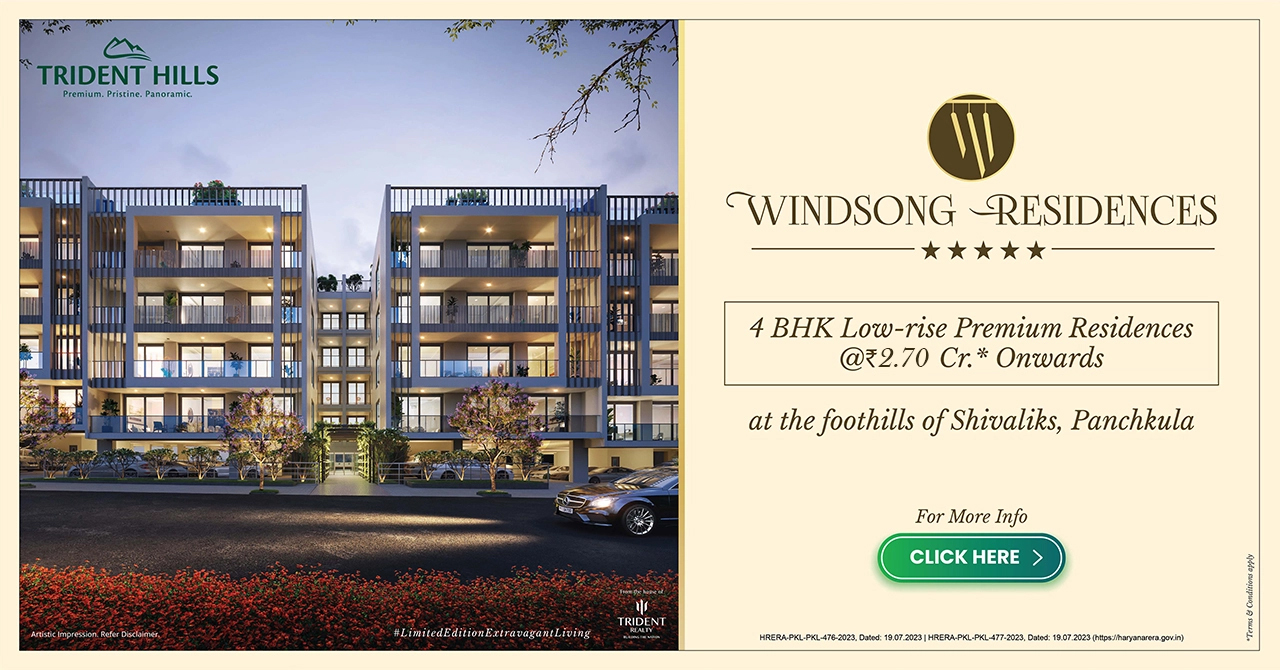
Why Green Living Is Becoming Non-Negotiable in Premium Real Estate
Luxury housing in India is undergoing a quiet revolution.. Once defined by scale, finishes, and exclusive amenities, today’s premium real estate is increasingly being judged by a different benchmark.
Buyers with global exposure and long-term investment outlooks are now prioritising energy-efficient, climate-resilient, and environmentally responsible homes. According to a 2024 Knight Frank India report, over 70% of high-net-worth homebuyers now consider “green certifications” and “eco-smart design” among their top five purchase criteria, a sharp rise from just 42% in 2019.
Sustainable homes offer measurable benefits, from lower maintenance and energy costs to improved air quality and stronger resale potential. As regulations tighten and awareness grows, developers who embed sustainability at the core of their design and construction practices are the ones defining the next era of premium living.
In this blog, we uncover why today’s homebuyers are choosing greener, cleaner, and more balanced lifestyles and how premium developments are evolving to meet this growing demand for sustainable, future-ready living.
Post-Pandemic Priorities: The Rise of Wellness and Space
Beyond environmental consciousness, the COVID-19 pandemic permanently recalibrated luxury housing priorities, accelerating the focus on health and spatial quality. Affluent buyers demand spaces that actively support physical and mental well-being. This manifests architecturally in the surging demand for Low-Density Living (LDL).
In congested Indian metros, the true measure of exclusivity is not maximising floor area but maximising the breathing room between residences. LDL projects, which typically offer fewer than 50 apartments per acre—a substantial reduction from the typical high-rise format of 80–100 units per acre—provide enhanced privacy, extensive greenery, and a deeper connection to nature. The commitment to spacious, multifunctional homes has contributed to the growing popularity of peripheral areas like New Gurgaon, which offer the requisite land availability for comprehensive, high-quality green infrastructure that high-density core areas cannot easily accommodate.
The Non-Negotiable Financial Value Proposition
The mandate for green living in premium real estate is firmly rooted in compelling financial metrics. Sustainability forms a strong financial foundation that enhances asset valuation, improves operational efficiency, and ensures long-term investment stability.
Higher Asset Values and Capital Returns
Green building certifications serve as powerful catalysts for valuation and investment attractiveness. Data compiled by CII-IGBC indicates that certified properties routinely command a 10–15% higher sales price compared to conventional, uncertified peers. This valuation premium is mirrored across key Indian metropolitan areas. Health-conscious homebuyers and corporate occupiers prioritise these residences for their superior indoor air quality and lower overall maintenance obligations. Green projects are inherently better positioned to retain their value and marketability over the long term, acting as a strategic hedge against future, stricter sustainability codes.
Quantifying Operational Efficiency and ROI
The most tangible financial benefits of green luxury are realised through drastic reductions in operating expenditures. Green homes are engineered to be efficient from conception, delivering cost savings on water and energy. Green-certified buildings typically save:
• 20–30% on energy costs
• 30–50% on water usage
• 20–30% on overall maintenance costs
For instance, large, certified developments in India have reported multi-crore annual savings, converting the intangible concept of sustainability into a bankable reduction in the Total Cost of Ownership (TCO).
Improved Liquidity and Investment Protection
Green certification enhances liquidity and transaction velocity, crucial factors for investors. Certified assets attract higher confidence from institutional investors who prioritise regulatory compliance and robust long-term performance. For residential assets, this translates into faster transactions: green-certified homes often close deals 20–30% faster than comparable non-certified units. For example, certified luxury residences in Bengaluru commanded a verifiable 12% premium in resale value compared to conventional nearby projects. The Indian government supports this transition through financial incentives, including Income Tax deductions on loans for renewable energy systems and subsidies from the Ministry of New and Renewable Energy (MNRE) for solar installations.
Table 1 summarises the key financial advantages derived from green certification in the premium Indian real estate sector:
Certifications and Compliance
The credibility and verifiability of a premium sustainable home rest upon adherence to established rating systems. India has developed robust, indigenous frameworks intrinsically linked to national climate goals and urban development policy.
Green Building Rating Systems
The foundation of green living assurance in India is laid by its national certification programs: IGBC Green Homes (Indian Green Building Council) is the first rating program in India developed specifically for the residential sector, promoting energy efficiency and water conservation. GRIHA (Green Rating for Integrated Habitat Assessment) is India’s national rating system, developed by TERI and MNRE, that emphasises energy, water, and ecological impacts. These systems mandate compliance with critical requirements, such as Rainwater Harvesting and Minimum Fresh Air Ventilation, while guaranteeing demonstrable performance like 30–50% water savings.
Connecting Premium Projects to National Policy
The luxury market's voluntary adoption of certification is directly interwoven with India’s climate agenda, including the commitment to achieving net-zero emissions by 2070 and reducing carbon intensity by 45% by 2030. Premium developers are integrating Net-Zero Energy Building (NZEB) concepts. Simultaneously, the Ministry of Housing and Urban Affairs (MoHUA) is driving sustainable urban development through major policy initiatives like the Smart Cities Mission (SCM) and the National Urban Digital Mission (NUDM), which promote integrated infrastructure, technological harnessing, and circular economy principles.
The Inevitable Enforcement of Residential Codes
While the Energy Conservation Building Code (ECBC) is primarily mandatory for large commercial structures, setting minimum energy standards across tiers like ECBC, ECBC Plus, and Super ECBC, the robust implementation framework for a dedicated Residential ECBC (ECBC-R) remains a crucial area of national focus. The voluntary pursuit of high standards by luxury developers acts as a powerful strategic hedge, ensuring compliance for decades regardless of how stringent future government mandates become, thereby reinforcing long-term asset value.
Table 2 illustrates the quantifiable performance benefits guaranteed by IGBC and GRIHA standards in residential construction:
Architectural and Technological Pillars of Green Luxury
The core performance metrics are achieved through the integrated application of green architecture, wellness-driven design, and smart technology.
Green Architecture and Passive Design
Sustainable design begins with architecture that responds directly to India's climate. Luxury homes utilise passive design principles—such as proper building orientation, superior insulation, and high-performance envelopes—to maximise occupant comfort while minimising resource consumption. In India's warm climate, energy savings rely heavily on natural ventilation strategies (stack effect, cross-ventilation) to efficiently cool interiors, thereby reducing reliance on mechanical HVAC systems.
Biophilic Design: Bridging Nature and Home for Wellness
The emphasis on wellness necessitates Biophilic Design, rooted in the inherent human inclination to connect with nature. In urban centres facing air pollution and a deficit of green spaces, biophilic architecture is a health necessity. Key elements include maximising natural light via large windows, incorporating indoor greenery (like snake plants), and integrating natural materials (wood, stone). A critical component is the mandatory use of low-volatile organic compound (Low-VOC) paints and non-toxic materials, ensuring superior Indoor Environmental Quality (IEQ).
Water Security Systems and Renewable Energy Integration
Water scarcity makes robust water management a core non-negotiable requirement. Modern projects must implement a zero-discharge infrastructure utilising mandatory rainwater harvesting (RWH) systems, greywater recycling for irrigation and high-efficiency plumbing fixtures. Energy autonomy is achieved through the comprehensive integration of renewable energy. Developers install solar panels to meet a significant portion of energy demand, with large-area developments increasingly aiming to have installed renewable energy capacity equal to at least 20% of annual energy consumption.
The Smart Eco-Home: Digitalising Sustainability
Smart home technology is the digital engine that optimises the performance of physical green features. Smart systems provide automated climate control via smart thermostats and lighting systems, adjusting to patterns to mitigate energy waste while optimising comfort. This digital integration is critical for performance assurance. It is now a compliance mechanism for achieving ambitious national targets, particularly Net-Zero Energy Buildings (NZEBs), by managing on-site renewable energy and real-time energy metering.
The Trajectory Towards Net-Zero Communities
The final trajectory of sustainable luxury is the shift toward planning and building entirely green communities and integrated townships. This holistic approach maximises environmental benefits and fosters social cohesion. As India’s urban population is projected to grow significantly by 2040, the rise of integrated townships is the key structural mechanism for scaling sustainable solutions across vast populations. Net-Zero Energy Buildings (NZEBs), achieved through the convergence of integrated passive design, intelligent controls, and renewable technology, serve as the definitive luxury baseline for future construction.
Conclusion
The analysis clearly demonstrates that sustainability, wellness, and eco-consciousness are no longer optional amenities in India’s premium real estate sector, but essential, non-negotiable components of value creation.
This mandate is driven by a powerful confluence of ethical demands from UHNWIs and irrefutable financial justification. Green-certified assets command a verified 10–15% sales-price premium and generate long-term financial security through 20–30% reductions in operational utility and maintenance costs. Furthermore, certified status serves as a financial de-risking strategy, enhancing liquidity and ensuring acceptance by institutional investors that demand ESG compliance.
For Trident Realty, green living is not just a value proposition—it’s a commitment to building enduring communities that respect both people and the planet. The modern affluent home is intrinsically defined by its efficiency, resilience, and demonstrable commitment to occupant health, establishing a new, non-negotiable baseline for quality and value that is already serving as the standard for future sustainable urbanisation across the country.









